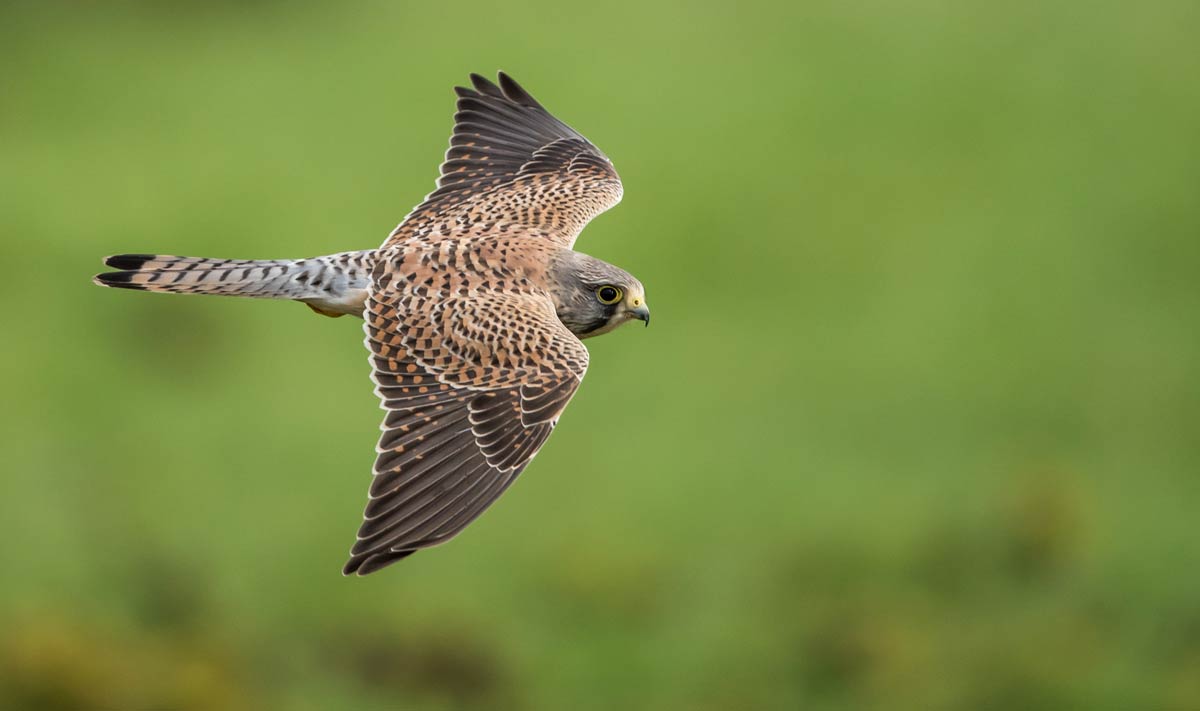Kestrels Help Researchers Improve Drone Flight in Wind Tunnel Tests
Aerospace engineers from Australia’s Royal Melbourne Institute of Technology are going to learn a thing or two from nature’s flight experts.
Kestrels, a predatory bird known for it’s ability to hover in the air as it lines up a target before swooping down upon its prey, are one of the avian world’s most skilful flyers.
Now, a pair of Australian – or Nankeen – kestrels have been chosen to take part in a study that aims to improve the stability of drones in flight.
The kestrels in question are Jedda and Kevy, and are owned by Martin Scuffins, who runs the Leigh Valley Hawk and Owl Sanctuary in Victoria, Australia.
To help the researchers from RMIT, they will fly in the university’s Bundoora wind tunnel lab to help them understand how to make drones more stable, particularly in gusts of wind.
“My job is to get my kestrel to hover in the wind tunnel for the purpose of their research, to look at how kestrels handle gusty conditions because they’re the masters of hovering,” Mr Scuffins told the Courier.
While this may sound like a tricky task – one can’t imagine the birds would naturally choose to fly down a wind tunnel, Scuffins says that these two are highly trained and have been used for education in the past.
“They do school shows, outdoor free flight shows so for them whether it’s an indoor venue or outside in the wind they’re pretty adaptable so the wind tunnel isn’t too much of a challenge,” Mr Scuffins says.
“The only challenge is that flying downwind is difficult for them so we have two handlers, one at end end of the wind tunnel, to the bird flies in to wind, hovers and the data is captured, then the second handler carries it downwind.”
Dayna Foote, project lead on the research team says that the research is part of her fourth year honours project for aerospace engineering.
“We are looking at gust mitigation technology and how to improve that for drones and micro air vehicles,” she said.
“Birds can provide biological inspiration towards improved stability in a range of atmospheric winds. In addition, it is my hope that the study will increase our understanding of the biology of these amazing birds,” says Scuffins.
While taking part in the flight tests, the 170-200gram kestrels will be fitted with motion tracking markers on their head, wings, and tail. Thirteen cameras will then track their movement through the wind tunnel, capturing the birds’ flight, after which the research team will generate a 3D model of the flight using specialised software.
It is not the first time kestrels have taken part in the study of flight at RMIT.
In 2014, a kestrel assisted researchers in an anti-turbulence study to develop an innovative system that mimicked the way the birds detect disturbances on their feathers.





















